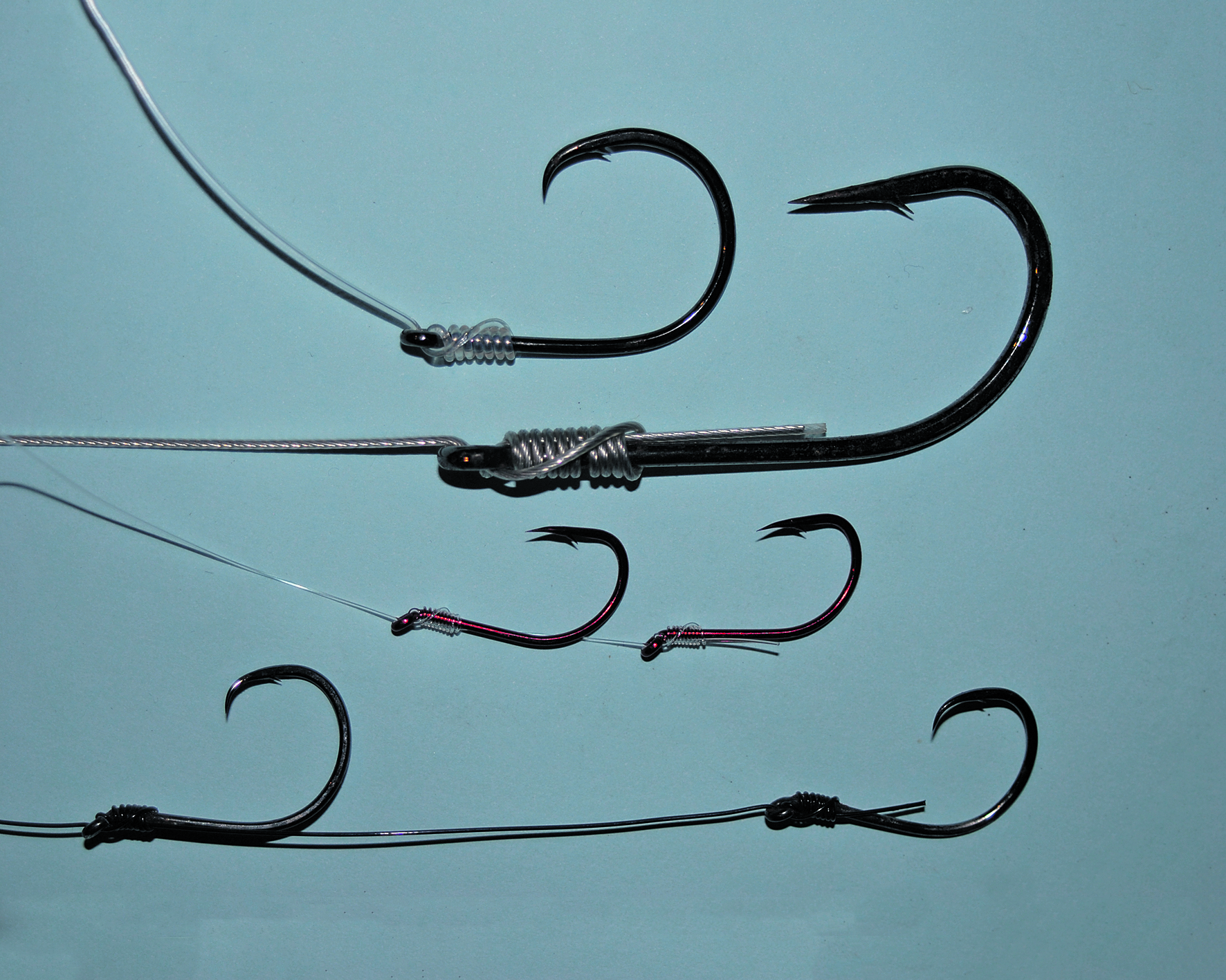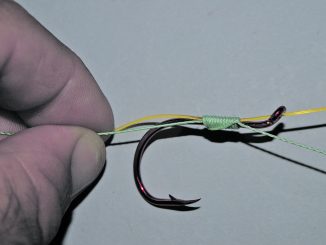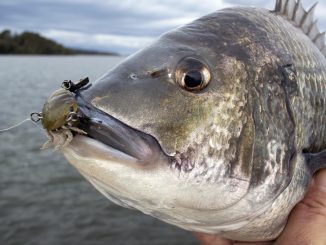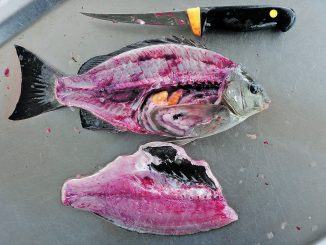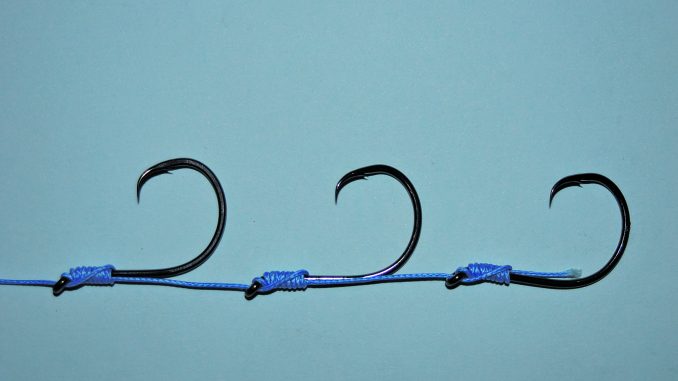
by Gordon Macdonald •
Effective rigging and good bait presentation can go a long way in determining the success of your next fishing trip. Being able to rig baits in a way that presents them naturally and promotes maximum hook setting potential will result in more bites and an increased bite to capture ratio.
For many longer baits, including whole squid, pilchards, pike, mullet, fillet baits and the like, you need to have good hook coverage of the bait and also keep it straight without it bunching up, which would cause the bait to spin in the current and appear unnatural. Several smaller hooks will present a bait better than a single large hook in most situations. There are several ways to make a snelled hook rig, yet this month we are going to look at the Simple Snell, an easy and effective rigging option that will make these sort of baits a much more productive offering.
WHY SNELL?
Basically, a snelled hook rig comprises of two or more hooks which are knotted onto the line at a set length apart. This offers better flexibility than when rigging with hooks ganged in the eye-to-eye fashion and allows you to make rigs of any length with the hooks at any distance apart. You can even use hooks of different sizes in the one rig allowing you to have a larger hook at the head of the bait and a smaller one through the tail. Any type of hook can be used, however patterns with a turned out eye often present better than those with a straight eye, especially when using thick monofilament or fluorocarbon leaders (see image A). All types of leader materials including monofilament, fluorocarbon and even nylon-coated wire can be used when making snelled hook rigs therefore this type of rig can cover a huge array of bait fishing situations. Nylon-coated wire rigs are great for when you are targeting sharks and other toothy creatures and snelling the hooks to this type of wire is so easy. The snell knot we utilise for this rig is exceptionally strong and the more tension you put on the rig the tighter the knot locks. The only exception would occur if you were trying to use thin leader on large hooks, say a 10/0 hook on a 20lb leader. In this instance the knot may slip, however I can’t imagine why you would want such a large hook on such thin leader anyway. When using a sensible hook size to leader ratio, snelling will work a treat and personally I have never had a rig fail. In fact, the snell knot puts less stress on the leader than tying most other knots as there is no friction caused when the knot is pulled tight and no sharp angles on the leader material.
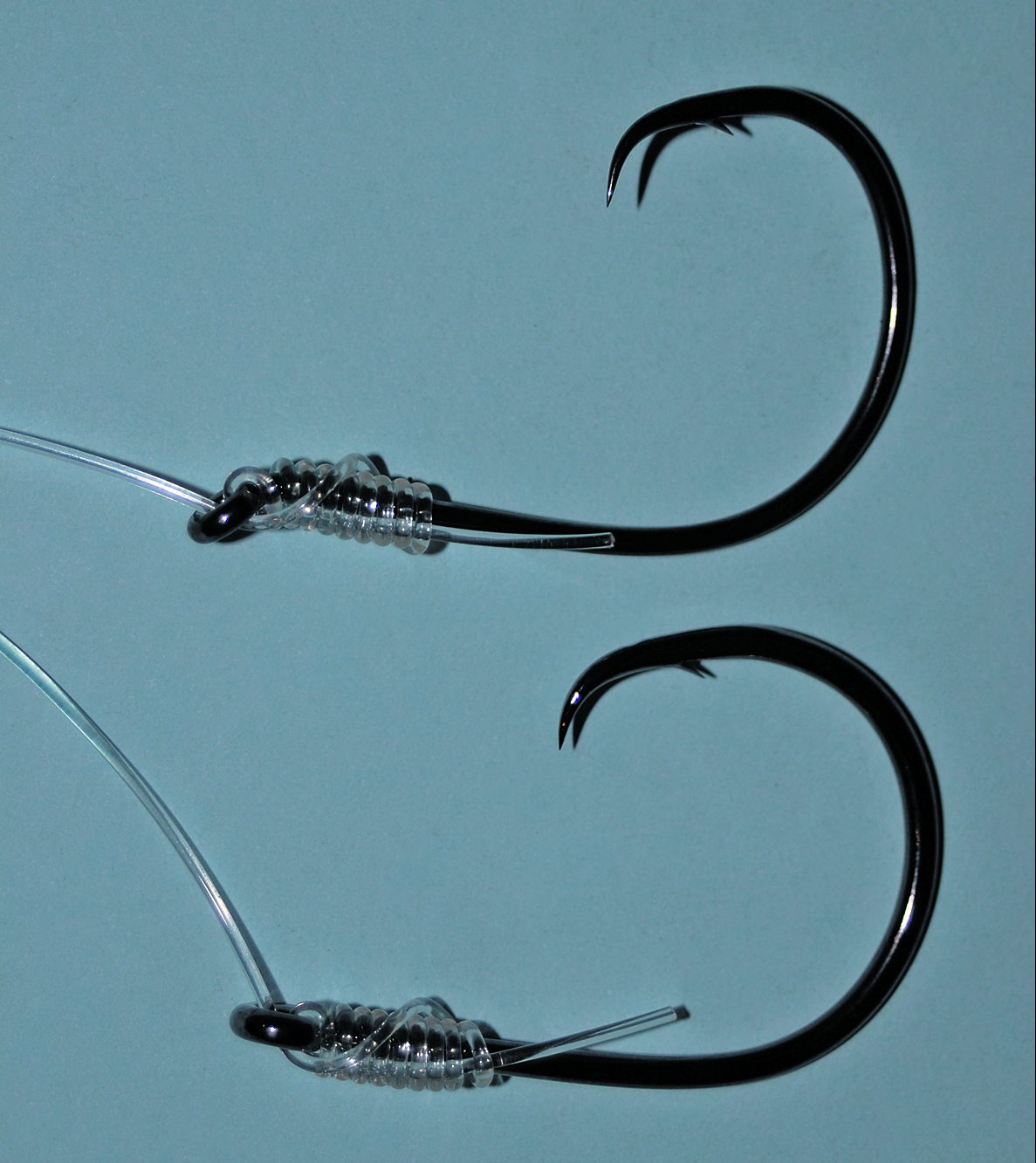
HOOKS
A wide array of hook styles, brands and sizes can be used for this rig. You will need to match the hook style to the bait and target species, and then choose a suitable leader material type and breaking strain. Be aware of some cheap, lower quality hooks where there is a gap where the eye curves around back onto the shank. These can sometimes damage the leader material or allow it to slip through the gap, causing the rig to fail.
Circle hooks work exceptionally well with this type of rigging as they offer a semi-stiff connection between the leader material and the hook. This has proven to offer better hook setting potential with this pattern. Even circle hooks with straight eyes can work well but you need to ensure that the leader material exits the eye on the gape side of the shank (see image A). This should be the case with all your snelled hook rigs but is especially important with circle hooks.
I have used hooks as small as 6 and as large as 12/0 when making snelled rigs. When drifting with whole fish (herring, whitebait, frogmouth pilchards and suchlike) or fillet strip baits in the estuary, it creates a great presentation that can attract anything from whiting to mulloway. I commonly use hooks from size 2 to 1/0 for this application (often Mustad Penetrators) with one hook pinned up through the head laterally, and the other down near the tail.
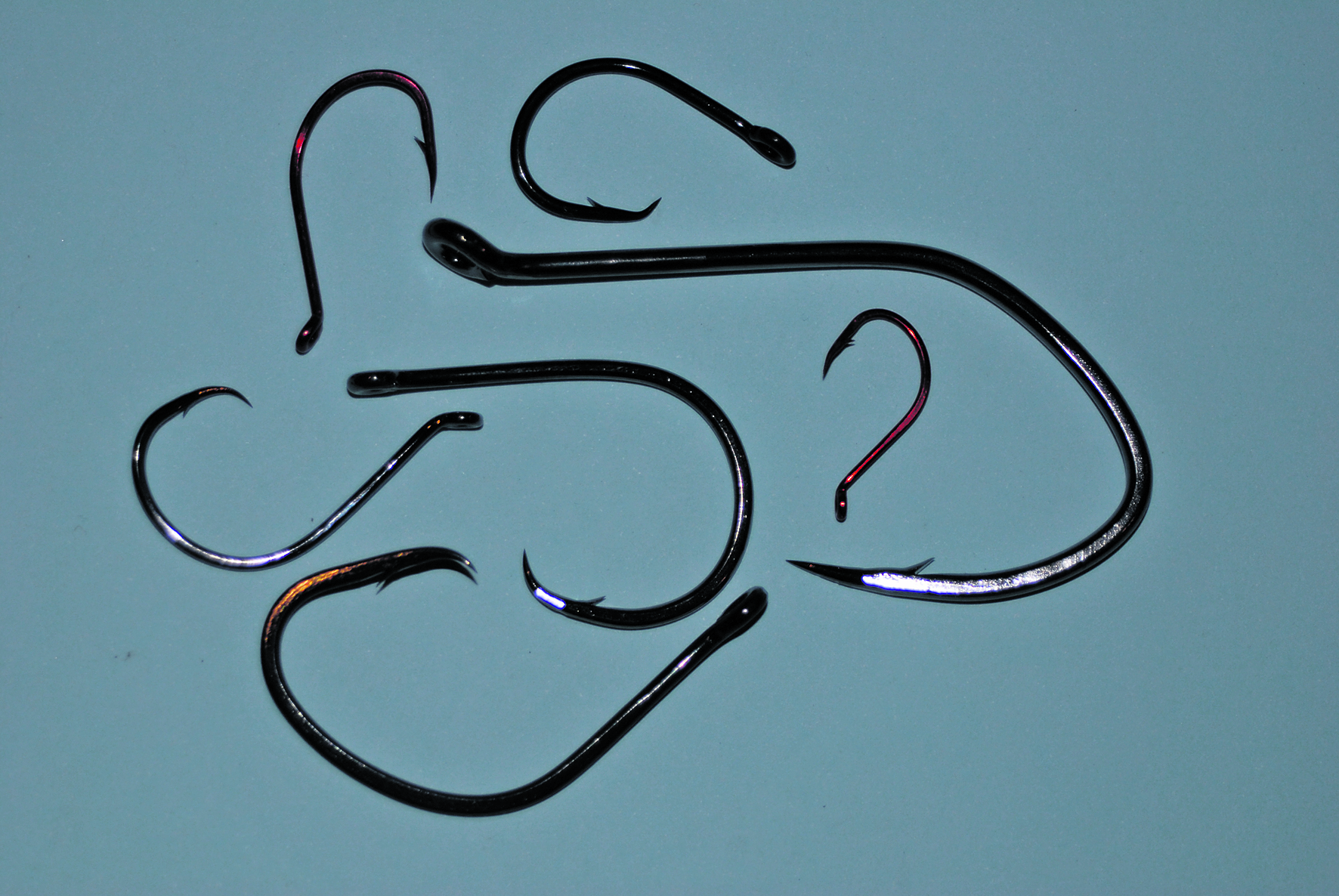
Other popular applications include float lining for snapper with baits of whole pilchards and squid (generally using a three hook snell-rig) and a twin circle hook rig on plastic-coated wire for whaler sharks in the bay and rivers. Just like any other rigging, you need to choose the hook style and size that best suits your application, yet this type of rigging works exceptionally well in a host of scenarios. Let’s look at making this extremely easy yet effective rig. (In the photos below I have used braid to make it easier for you to see the tying process, but I wouldn’t use braid as a leader material.)
THE SIMPLE SNELL
Step 1.
Cut a length of leader that is a little longer than you want the finished leader to be. Pass the tag end of the leader down through the eye of the hook to the end of the bend.
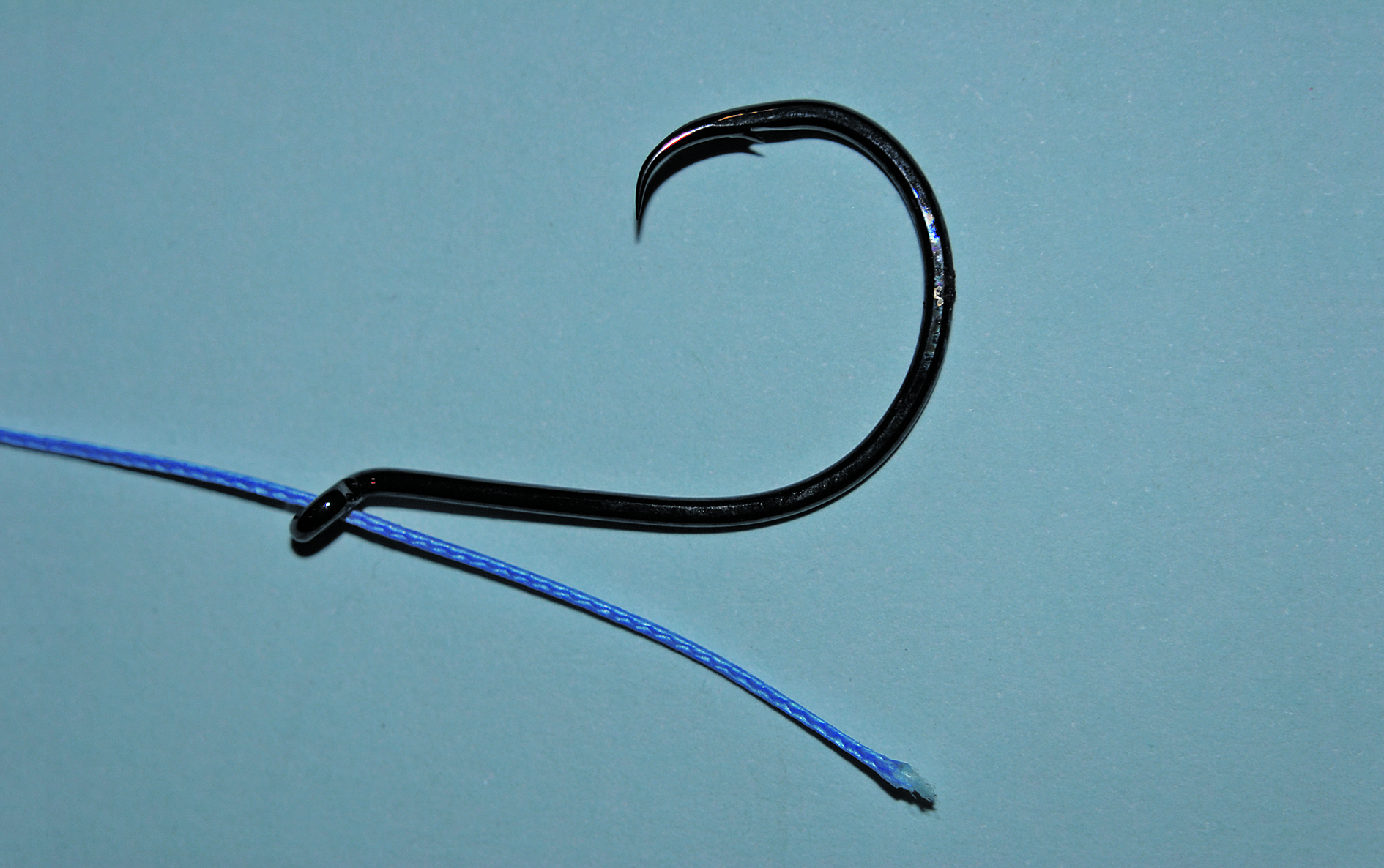
Step 2.
Holding the tag end against the shank, wrap the main portion of the leader around the shank, just below the hook eye.

Step 3.
Continue wrapping the main portion of the leader around the shank five to eight times. You should make more wraps in stiffer leader than you would in more supple leader, but never less than five times.
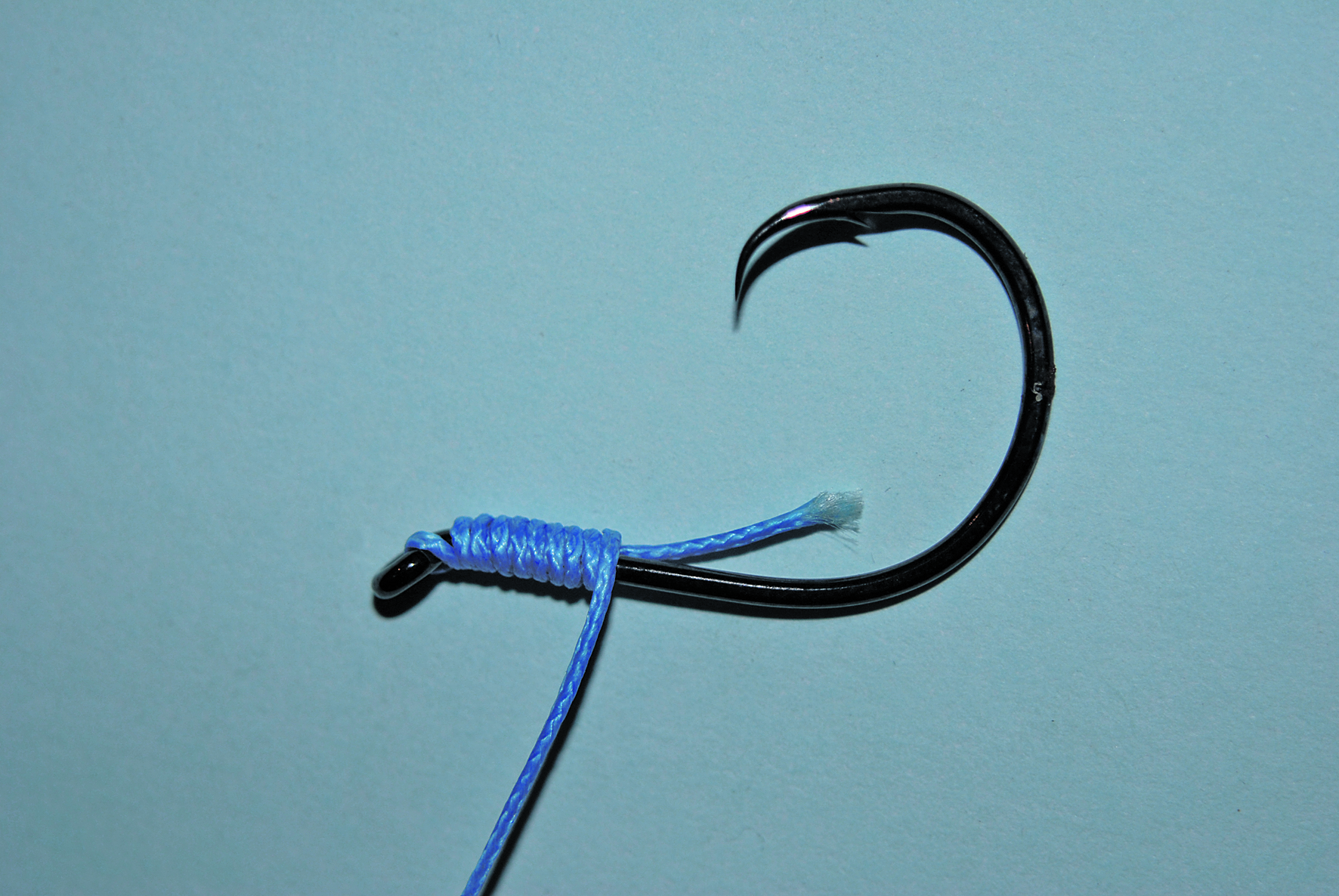
Step 4.
Pass the main portion of leader up through the hook eye, from the back of the shank through to the gape side of the hook.

Step 5.
To attach the next hook, pass the main portion of leader up through the eye (from the back of the shank through to the gape side). Space the two hooks apart at the desired length, depending on the size and type of bait being used.

Step 6.
Again pass the main portion around the shank, just below the hook eye.
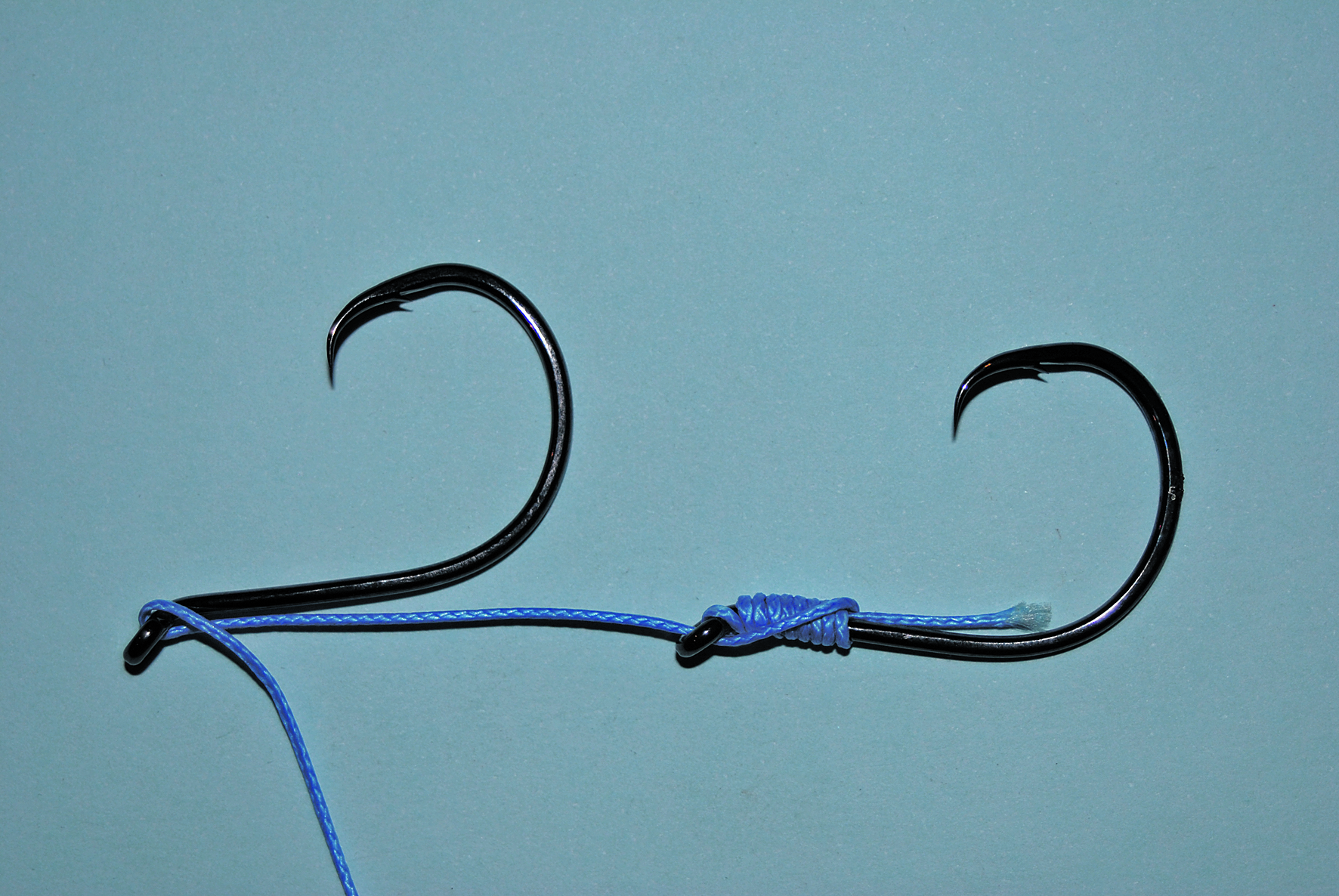
Step 7.
Wrap the leader around the hook shank five to eight times.
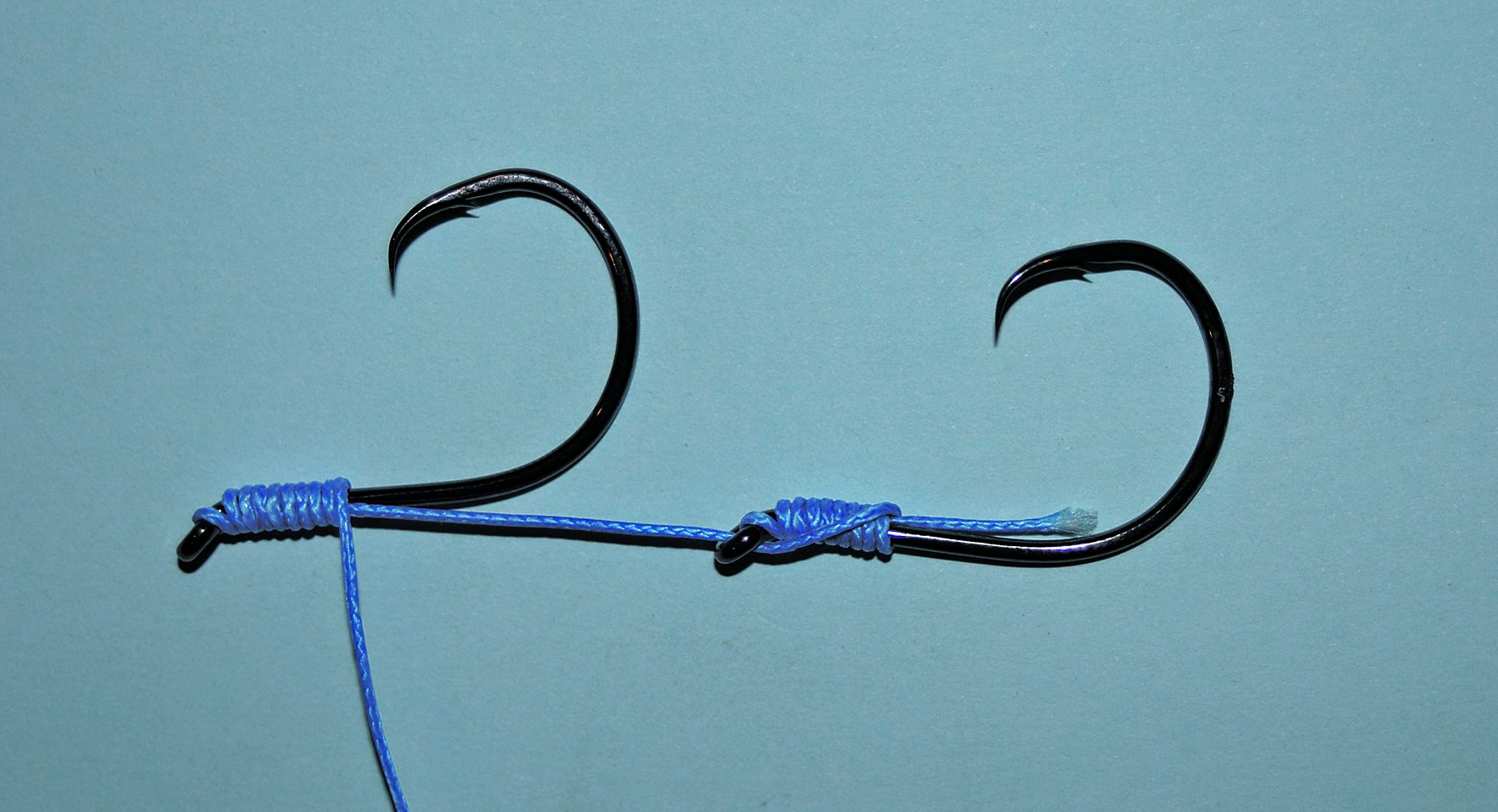
Step 8.
Pass the main portion of the leader back up through the hook eye. Subsequent hooks are put on exactly the same way with the spacing between each being any length you desire, depending on the bait being used. Attach a swivel, ring or loop to the other end of your leader and your snelled rig is ready for use.
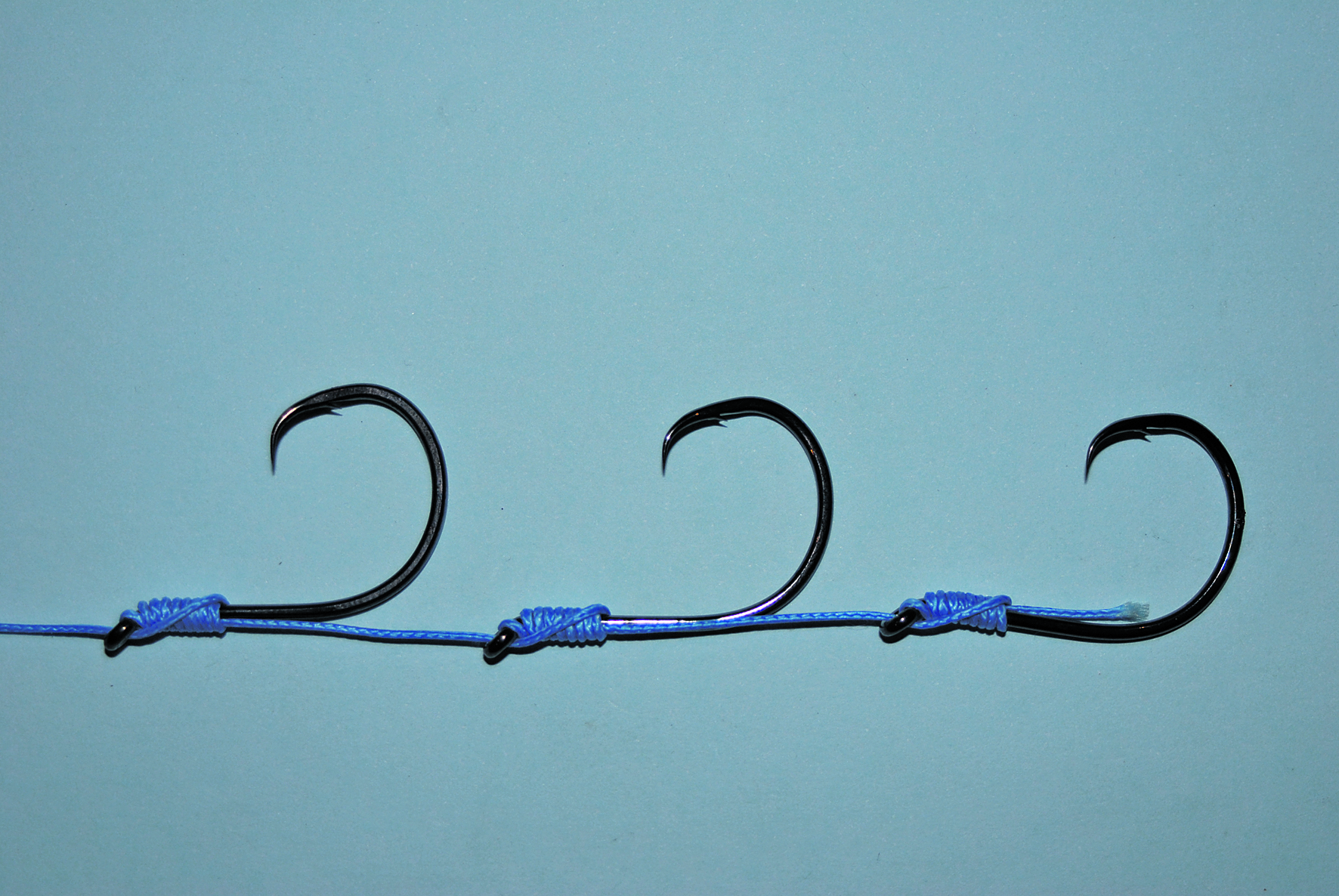
ADAPTABILITY
Snelling allows loads of options in hook style, leader type and overall size of the rig. I use this rig for a host of baits and a huge array of fishing situations, both inshore and offshore, for species as diverse as bream, snapper and billfish. It is extremely easy and you can quickly make a rig out on the water, depending on the size of the live baits you catch or the size of the bait you purchased on the way to the boat ramp. If it wasn’t so easy it wouldn’t be called the Simple Snell!
